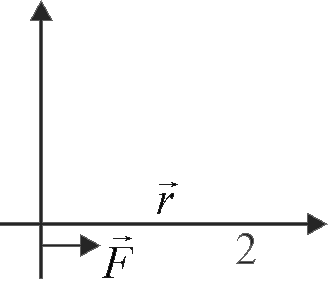355813 A force \(F=-(y \hat{i}+x \hat{j})\) acts on a particle moving in the \(X-Y\) plane. Starting from the origin, the particle is taken along the positive \(X\)-axis to the point \((2 a, 0)\) and then parallel to the \(Y\)-axis to the point \((2 a, 2 a)\). The total work done on the particle is
355813 A force \(F=-(y \hat{i}+x \hat{j})\) acts on a particle moving in the \(X-Y\) plane. Starting from the origin, the particle is taken along the positive \(X\)-axis to the point \((2 a, 0)\) and then parallel to the \(Y\)-axis to the point \((2 a, 2 a)\). The total work done on the particle is
355813 A force \(F=-(y \hat{i}+x \hat{j})\) acts on a particle moving in the \(X-Y\) plane. Starting from the origin, the particle is taken along the positive \(X\)-axis to the point \((2 a, 0)\) and then parallel to the \(Y\)-axis to the point \((2 a, 2 a)\). The total work done on the particle is
355813 A force \(F=-(y \hat{i}+x \hat{j})\) acts on a particle moving in the \(X-Y\) plane. Starting from the origin, the particle is taken along the positive \(X\)-axis to the point \((2 a, 0)\) and then parallel to the \(Y\)-axis to the point \((2 a, 2 a)\). The total work done on the particle is

